February 20, 2017
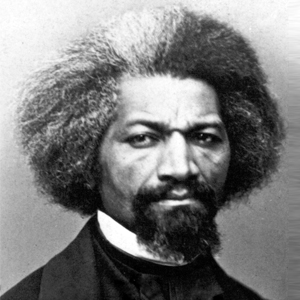
Frederick Douglass, the famed abolitionist, human rights advocate, speaker, and writer, lived in Rochester from approximately 1847 – 1872. Here, Douglass published his weekly newspaper, the North Star, which later became Frederick Douglass's Paper. With Elizabeth Cady Stanton and Susan B. Anthony, he founded the American Equal Rights Association, an organization that demanded universal suffrage. One of his most famous speeches, What to the Slave is the Fourth of July?, was given to the Rochester-based Ladies' Anti-Slavery Society on July 5, 1852 at their invitation.
Douglass lived with his family on Alexander St. and later South Ave. until an unexplained fire destroyed that home. He then moved to Washington, D.C., where he lived until his death in 1895 at the age of 77. Douglass is buried at Mt. Hope Cemetery.
While Douglass’ homes are no longer standing*, you can take RTS to visit these sites to reflect on Douglass and his tireless work for human rights:
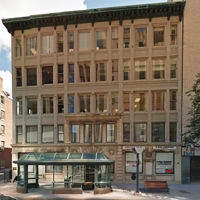 The Talman Building
The Talman Building
25 E. Main St.
Douglass published the North Star here; it was also a stop on the Underground Railroad.
Nearest bus stops
Main & State (ID 2492) and Main & Aqueduct (ID 2401). Walkable from the RTS Transit Center (0.6 miles)
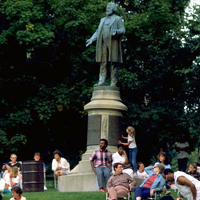 Frederick Douglass Monument
Frederick Douglass Monument
Highland Park
The monument is located only 300 yards away from the site of Douglass’ South Ave. home.
Nearest bus stops
South and Reservoir (IDs 3570 & 3569)
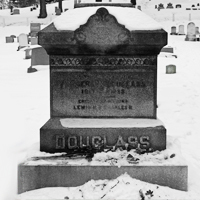 Frederick Douglass’s Grave
Frederick Douglass’s Grave
Mt Hope Cemetery
The final resting place of Douglass and his first wife, Anna.
Nearest bus stops
Mt. Hope & Highland (IDs 2764 & 2763)
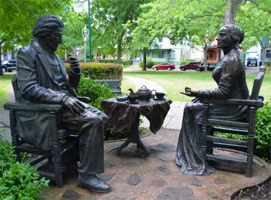 Let’s Have Tea statue
Let’s Have Tea statue
Susan B. Anthony Square Park, 39 King St
The statue, depicting Douglass and Anthony having tea, was created by local sculptor Pepsy Kettavong and erected in 2001.
Nearest bus stops
Main & King (ID 2458) and Main & Reynolds (ID 2484)
While you’re traveling, you can listen to Douglass’ “What to the Slave is the Fourth of July? speech. This excerpt is read by James Earl Jones.
*In 2010, it was discovered that a home which Douglass owned and sometimes stayed in after moving away from Rochester is still standing.
Sources:
http://www.democratandchronicle.com/story/news/local/rocroots/2015/02/13/retrofitting-rochester-talman-building/23389203/
http://media.democratandchronicle.com/retrofitting-rochester/frederick-douglass-monument
http://www.cityofrochester.gov/article.aspx?id=8589936553
https://www.nps.gov/wori/learn/historyculture/frederick-douglass.htm
http://www.biography.com/people/frederick-douglass-9278324#life-in-slavery
http://www.math.buffalo.edu/~sww/0history/hwny-douglass-family.html
https://en.wikipedia.org/wiki/Frederick_Douglass
https://rocwiki.org/Frederick_Douglass
Back to all Blog posts